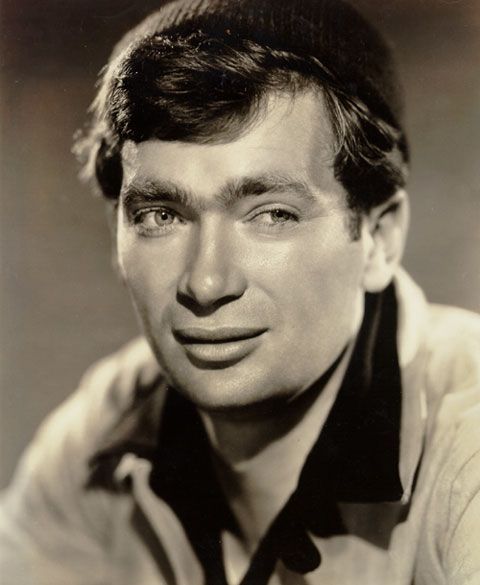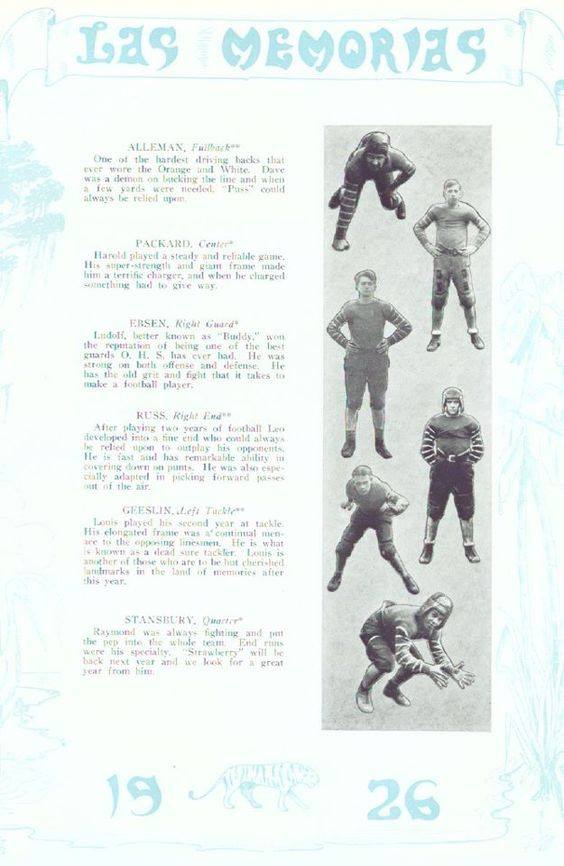
“Remember that of all the elements that comprise a human being, the most important, the most essential, the one that will sustain, transcend, overcome and vanquish obstacles, is spirit!” –Buddy Ebsen
To me, one of the most endearing stars working during Hollywood’s Golden Age was Buddy Ebsen. After maintaining a musical act with his sister for several years, Ebsen’s song-and-dance routines soon graced the silver screen. While he was slated to appear in one of the greatest films ever made, his career took a completely different, albeit still successful, turn.
A middle child with four sisters, Buddy Ebsen was born Christian Ludolf Ebsen, Jr., on April 2, 1908, in Belleville, Illinois. His Danish father, Christian Ludolf Ebsen, Sr., was a choreographer, who once owned a dance studio. He was also a physical fitness advocate for the local school district before he operated a natatorium. Buddy’s mother, Frances, was a painter of Latvian descent.


Ebsen was raised in Belleville until the age of 10, when his family moved to Palm Beach County, Florida. In 1920, Ebsen and his family relocated to Orlando, Florida, to help ease his mother’s aggravated sickness. Here, Ebsen and his sisters learned to dance at a dance studio his father operated in Orlando.
Despite being an average student at Orlando High School, Ebsen was a member of the swimming team. He participated on the team for all four years of high school and became a Florida State Champion. He also played football his senior year and began writing songs in high school. Ebsen graduated from Orlando High School in 1926.



Initially interested in a medical career, Ebsen attended the University of Florida in Gainesville, Florida, from 1926 to 1927, and then Rollins College in Winter Park, Florida, from 1927 to 1928. Family financial problems caused by the collapse of the Florida land boom forced Ebsen to leave college at age 20.
Ebsen left Orlando in the summer of 1928 and attempted to work as a dancer in New York City, arriving with only $26.75 in his pocket. He worked at a soda fountain shop by day. He and his sister, Vilma Ebsen, performed as a dance act in supper clubs and in vaudeville, where they were known as “The Baby Astaires.” On Broadway, the Ebsens appeared as members of the chorus in the musicals Whoopee, Flying Colors, and Ziegfeld Follies of 1934. A rave review from New York columnist Walter Winchell, who saw them perform in Atlantic City, New Jersey, led to a booking at the Palace Theatre in New York City, the pinnacle of the vaudeville world.




In 1935, Ebsen and his sister were approached by Metro-Goldwyn-Mayer for a screen test. They then signed a two-year contract, with a two-year option, for $1500.00 per week each. After moving to Hollywood, the siblings made their film debut in the 1935 film Broadway Melody of 1936, alongside Eleanor Powell, Robert Taylor, June Knight, and Jack Benny. This was to be Vilma’s only film, as a contract problem prevented her from making other films and she soon retired from show business.





Ebsen went on to appear in numerous films, both musicals and non-musicals, including Born to Dance (1936); Captain January (1936), in which he danced with Shirley Temple; Broadway Melody of 1938 (1938), with Judy Garland as his dance partner; and The Girl of the Golden West (1938). Ebsen partnered with actresses Eleanor Powell and Frances Langford, among others, and also danced solo.


Ebsen was noted for his unusual, surreal dancing and singing style. His contribution to the “Swingin’ the Jinx Away” finale of Born to Dance is one such example of his unique dancing style. His abilities might have been why filmmaker Walt Disney chose Ebsen to be filmed dancing in front of a grid as an aid to animating Mickey Mouse’s dancing in Disney’s 1929 to 1939 “Silly Symphonies” animated short films.




When Ebsen turned down studio head Louis B. Mayer’s offer of an exclusive contract with MGM, Mayer warned him that he would never get a job in Hollywood again. Nonetheless, MGM did cast Ebsen as the Scarecrow in its 1939 film The Wizard of Oz. Ebsen then swapped roles with actor Ray Bolger, who was originally cast as the Tin Man. Ebsen recorded all his songs as Tin Man, went through all the rehearsals, and started filming. However, he soon began experiencing cramps and shortness of breath, eventually leading to hospitalization.
Ebsen recounted, “Production had been underway for ten days when, one night after dinner, I took a deep breath – and nothing happened! I felt like no air had reached my lungs… as though someone had coated them with glue. And my breathing was excruciatingly labored. I wondered if I was dying.”





Doctors determined that Ebsen was suffering a reaction to the aluminum dust used in the Tin Man makeup; he was forced to leave the production for health reasons.
In an interview included posthumously on the 2005 DVD release of The Wizard of Oz, Ebsen recalled that the studio heads did not believe he was sick until someone tried to order him back to the set and was intercepted by an angry nurse. Ebsen was replaced by Jack Haley, with the makeup quickly changed to a safer aluminum paste. As noted in a documentary on the 2005 DVD, MGM did not publicize the reason for Ebsen’s departure; even Haley was not told until later.


Although Haley re-recorded most of Ebsen’s vocals, Ebsen’s Midwestern voice (as opposed to Haley’s Bostonian accent), with the enunciated “r” in the word “wizard”, can still be heard on the soundtrack during several reprises of the song “We’re Off to See the Wizard.” Ebsen’s recording of the Tin Man’s only solo song, “If I Only Had a Heart,” still exists and is included on the two-CD Deluxe Edition of the film’s soundtrack, while a still photo recreation of the sequence featuring shots of Ebsen as the Tin Man was included as an extra with all VHS and DVD releases of the film since 1989. Until his dying day, Ebsen complained of lung problems from involvement in “that damned movie.” Ebsen outlived all of the major cast members of The Wizard of Oz.
After recovering from the illness, Ebsen became embroiled in a contract dispute with MGM that left him idle for long periods. He took up sailing, eventually becoming so proficient in seamanship that he taught the subject to United States Navy officer candidates. In 1941, with the start of U.S. involvement in World War II, Ebsen applied several times for an officer’s commission in the Navy but was repeatedly turned down. His application for a United States Coast Guard commission was accepted, and he was promptly given the rank of Lieutenant, Junior Grade. This wartime rank was one step up from the rank of Ensign, the usual rank given newly appointed naval officers in peacetime. Ebsen served as damage control officer and later as executive officer on the Coast Guard-manned Navy frigate USS Pocatello, which recorded weather at its “weather station” 1,500 miles west of Seattle, Washington. These patrols consisted of 30 days at sea, followed by 10 days in port at Seattle. Ebsen was honorably discharged from the Coast Guard as a lieutenant in 1946.
Ebsen made his television debut on an episode of The Chevrolet Tele-Theatre in 1949, which resulted in several more television appearances. Throughout the 1950s, Ebsen performed in films, mainly Westerns. One notable exception was an acclaimed role as Doc Golightly, an older, rural veterinarian deserted by his young wife (played by Audrey Hepburn) in 1961’s Breakfast at Tiffany’s.


Ebsen became famous as Jed Clampett, an easygoing backwoods mountaineer who strikes oil and moves with his family to Beverly Hills, California, in the long-running CBS sitcom, The Beverly Hillbillies. Although scorned by critics, The Beverly Hillbillies attracted as many as 60 million viewers between 1962 and 1971 and was several times the highest-rated series on television. The show also spawned similar Paul Henning-produced rural sitcoms such as Green Acres and Petticoat Junction, which were eventually linked in crossover episode arcs. The Beverly Hillbillies was still earning good ratings when it was canceled by CBS because programmers began shunning shows that attracted a rural audience.
Ebsen returned to television in 1973 as the title character of Barnaby Jones, which proved to be his second long-running television series. Barnaby Jones was a milk-drinking detective who came out of retirement to investigate the death of his son. Critics and CBS executives ridiculed the age of the show’s audience, but it lasted 8 1/2 seasons and 178 episodes. When Barnaby Jones was canceled, it was one of the last surviving 1970s detective dramas.
Although generally retired from acting when he reached his 80s, he had a cameo in the 1993 film version of The Beverly Hillbillies as Barnaby Jones, with the television theme underscoring the scene. This was Ebsen’s final motion picture role.



Ebsen died of respiratory failure at Torrance Memorial Medical Center in Torrance, California, on July 6, 2003, at the age of 95. His ashes were scattered at sea.
Ebsen’s hometown of Belleville, Illinois, still takes note of its famous son. Ebsen grew up at 805 Lebanon Ave. in Belleville. In fact, Ebsen visited his hometown on October 12th, 1992.

According to the Belleville News-Democrat:
Ebsen was also in the area in 1977, when he went sailing at Carlyle Lake. He became an expert sailor while idled by a contract dispute with MGM, even teaching for the U.S. Navy during World War II.
Besides strolling downtown and touring his family home, Ebsen visited the News-Democrat offices. Newsroom staffers remember the visit, particularly because Ebsen did a little soft-shoe routine across the newsroom.
His childhood home still stands to this day and is privately owned.

Finally, in October 2014, Belleville, Illinois, unveiled the first inductees to their “Walk of Fame.” Buddy Ebsen is included among the honorees.



Finally, Ebsen’s daughter, Kiki Ebsen, recently recorded an album of songs dedicated to her father and his career. The album is entitled, “Scarecrow Sessions,” and is a loving tribute to her father. Among the songs linked closely to Buddy’s career is a unique gem–“Missing You,” which Buddy penned himself. The album is currently available for purchase and Kiki also maintains a Facebook presence.





Additionally, Ebsen resided in Palos Verdes. His estate still stands today at 605 Via Horquilla, Palos Verdes Estates, California.









Saw your link on Eleanor Powell Facebook page and you certainly didn’t disappoint. Thank you for writing this…People like Buddy are few & far-between and from our perspective, once in a lifetime. B$
Pingback: Frances Langford | Hometowns to Hollywood
Enjoyed reading your blog post about Mr. Ebsen! Some of these photographs are amazing!
I thoroughly enjoyed my visit to your website. What a lovely tribute your songs are to your father and to his memory. He continues to inspire me and countless others. Well done.
Pingback: The Fabulous Films of the 30s: Born to Dance (1936) | Hometowns to Hollywood
Thanks so much for writing on Buddy Ebsen. What a talent he was ! His dancing was incredible as well as his comedic ability ! Love watching the man in his many roles !
Pingback: Ray Bolger | Hometowns to Hollywood
Wonderful post. I learned so much. Decent and talented. A life well-lived.
Pingback: Warum der Blechmann die gefährlichste Rolle im Zauberer von Oz war